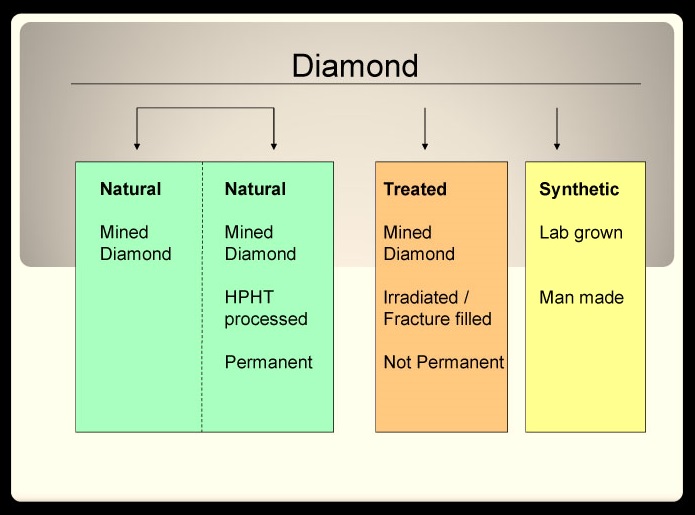Manufacturers and distributors of High Pressure High Temperature (HPHT) processed natural diamonds are claiming an opportunity for their small, specialized niche. Not to be confused with treatments or synthetics, advocates of HPHT-processed natural diamonds are working to change the perception of their product.
[two_third]
There are two types of HPHT diamonds, explained Gerry Hauser, CEO of Hadar Diamonds, a distributor of HPHT natural diamonds. The first is a lab-grown, or synthetic, diamond that is created using HPHT by simulating the conditions by which a natural diamond is produced. The second is a natural diamond that uses HPHT to change the brownish color of the stone to achieve its full potential.
Paul Kaplan, director of Antwerp operations at Bellataire Diamonds, a subsidiary of Lazare Kaplan that sells branded HPHT natural mined diamonds, stressed that processing natural type IIa diamonds has nothing to do with growing synthetic diamond crystals. He added that these processed natural diamonds should be differentiated from treated stones that have been irradiated or fracture filled, since there is nothing added to, or taken away from their all natural content.
[/two_third][one_third_last]
“A natural diamond that uses HPHT to change the brownish color of the stone to achieve its full potential.”
[/one_third_last]
Rather, HPHT processing of type IIa diamonds simply “de-stresses” the diamond, Kaplan noted. While a diamond starts out at the earth’s core as colorless, it passes through substantial heat and pressure as it makes its way up to the earth’s surface. That passage places stress on the stone which causes it to appear brownish.
“We recognized that if we could put the diamond back into that heat and pressure scenario, the diamond could be de-stressed,” he explained. “In a controlled environment it can relax and go back to its original color.”
Lack of awareness
Both Hauser and Kaplan urge retailers to embrace these goods as an opportunity to sell a high-quality diamond for a significantly lower price than the unprocessed natural equivalent. They estimate that a consumer can save 20 percent to 30 percent by buying an HPHT-processed natural diamond compared to the equivalent unprocessed natural stone. […]

The above chart illustrates the various types of natural, treated and synthetic diamond classifications as explained by Bellataire Diamonds . (Courtesy Bellataire Diamonds).
